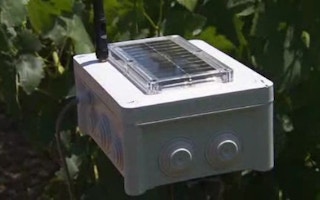We’ve already seen gadgets such as Koubachi and Flower Power, that communicate with users’ smartphones to let them know when their houseplants need watering. Scale that idea up to an agricultural level, and you get a prototype device known as the Farm Level Optimal Water management Assistant for Irrigation under Deficit – or FLOW-AID. It’s designed to let farmers in drought-stricken regions know when and how much water to apply to their crops, so they don’t run their irrigation systems unnecessarily.
FLOW-AID was developed by a group of 11 European companies and research institutes, as part of the EU-funded Innovation Seeds project.
Multiple devices are installed at key locations in a farmer’s field. Each device incorporates an above-ground control/communications unit, as well as humidity and electrical conductivity probes that are buried beneath the soil.
Using their smartphone, a farmer can access their network of FLOW-AIDs over the internet, to check the moisture and nutrient levels of their soil. The system will notify them when levels drop to the point that irrigation is required, at which point they can start their irrigation system remotely via their phone. As soon as they see that sufficient moisture levels have been restored, they can use their phone to turn the irrigation back off.
The system also incorporates software that takes location-specific factors such as plant properties, soil characteristics and water rationing limits into account.
So far FLOW-AID has been tested in six countries, where researchers have reported a 10 to 50 percent reduction in water use. Because the device also keeps track of nutrient levels in the soil, it can additionally advise users on how often fertilizer should be applied – this stops farmers from wasting money by over-fertilizing, and minimizes the amount of excess fertilizer entering the environment. It’s estimated that the system could lead to a reduction in fertilizer use of up to 30 percent.










